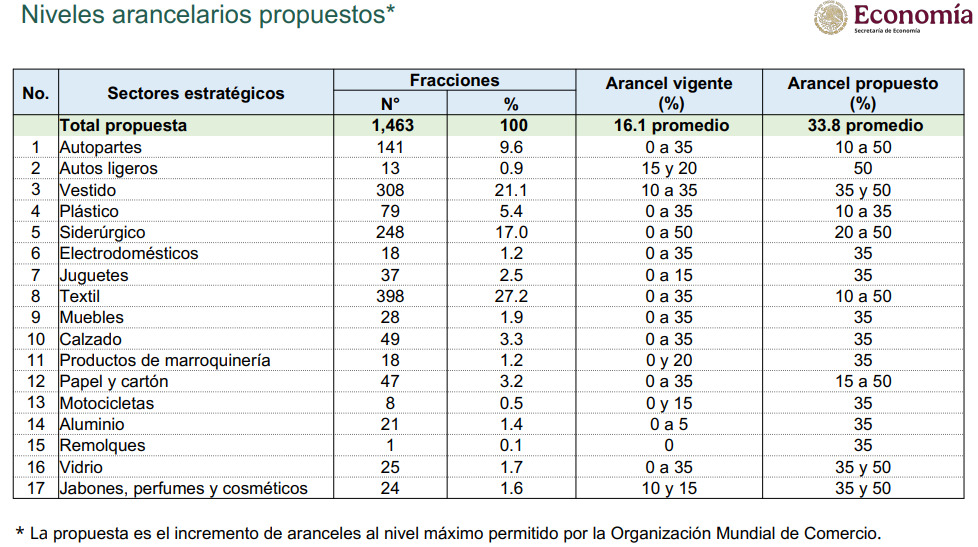The Mexican government proposed imposing the highest MFN tariff on 1,563 products (tariff items) to the Congress of the Union.
The initiative is likely to pass Congress with little or no modification, given that the Morena party (to which President Claudia Sheinbuam belongs) and its allies have a majority.
Highest MFN tariff
The Ministry of Economy presented this measure to strengthen national production and protect jobs in strategic sectors. The decision is part of Plan Mexico, which seeks to provide greater clarity to industrial policy. At the same time, it responds to the challenge of competition from Asia.
The main objective is to replace imports of goods and inputs. These are products that come from countries without trade agreements with Mexico, such as China, South Korea, India, Indonesia, Russia, Thailand, and Turkey. With this, part of the demand will be covered by national production. This increases installed capacity and, at the same time, generates thousands of additional jobs.
The measure also aims to protect 325,000 jobs at risk within these industries. These jobs are concentrated in the main manufacturing hubs: Nuevo León, Jalisco, the State of Mexico, Mexico City, and Querétaro. This will ensure that thousands of families retain their source of income.
Imports from Asia
The Ministry of Economy defined four key criteria. First, imports were selected that include both final goods and productive inputs. Second, the level of dependence on Asian suppliers was considered, and products with low dependence were prioritized.
Third, efforts were made to avoid inflationary pressures. The aim is to ensure that import substitution does not increase consumer prices. In this way, a balance is maintained between protecting industry and market stability. Fourth, the tariff limits of the World Trade Organization were respected, which keeps Mexico within the international regulatory framework.
The measure also has a macroeconomic impact. Reducing dependence on Asian imports and promoting domestic production will contribute to improving the trade balance. Likewise, the strategy will generate a multiplier effect by boosting local investment, strengthening value chains, and revitalizing domestic industry.
In conclusion, the government’s commitment not only seeks to reinforce productive sovereignty. It also aims to consolidate a more balanced growth model that is less vulnerable to external competition. Thus, domestic industry, jobs, and manufacturing regions remain at the center of economic policy.

